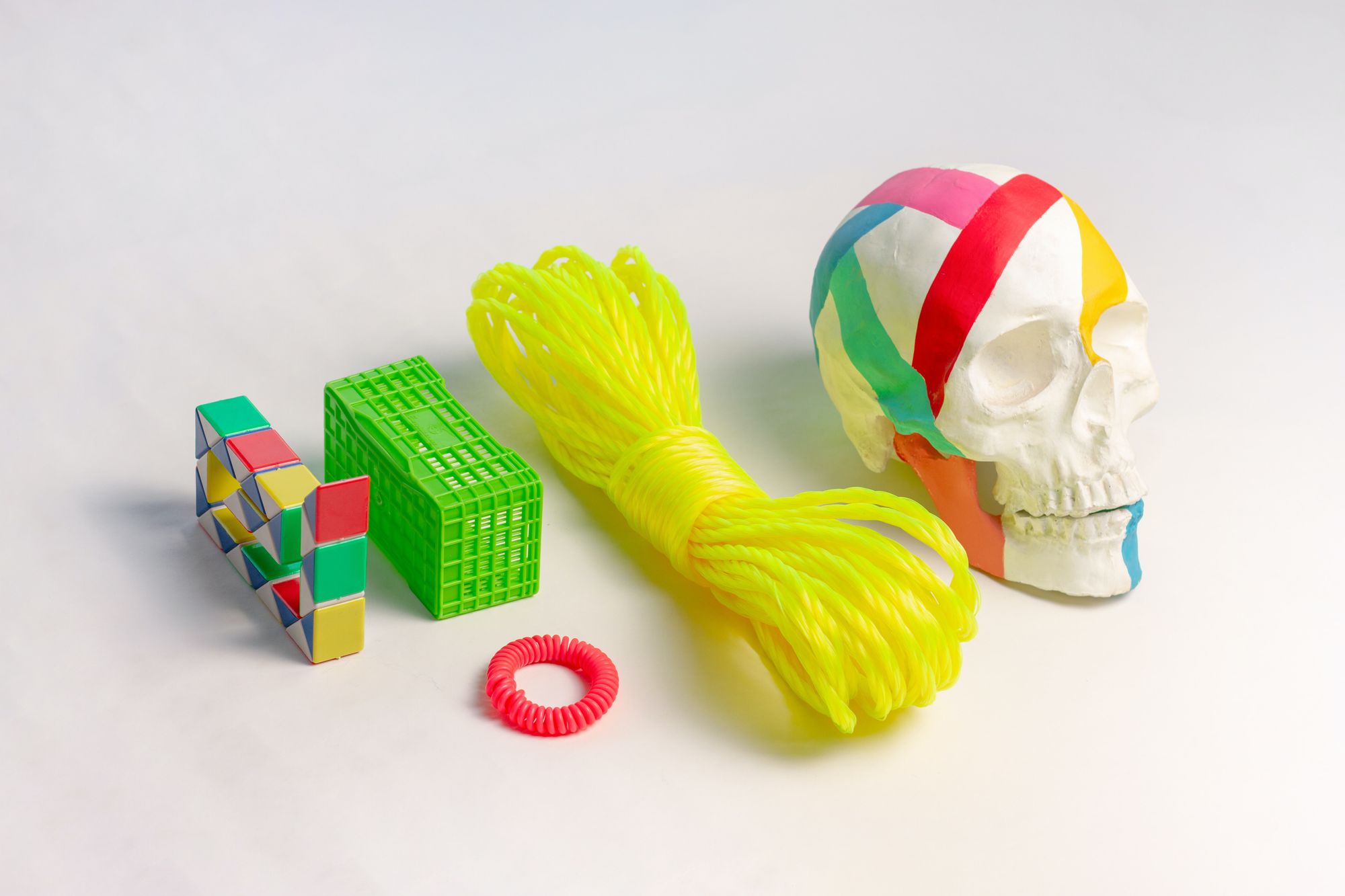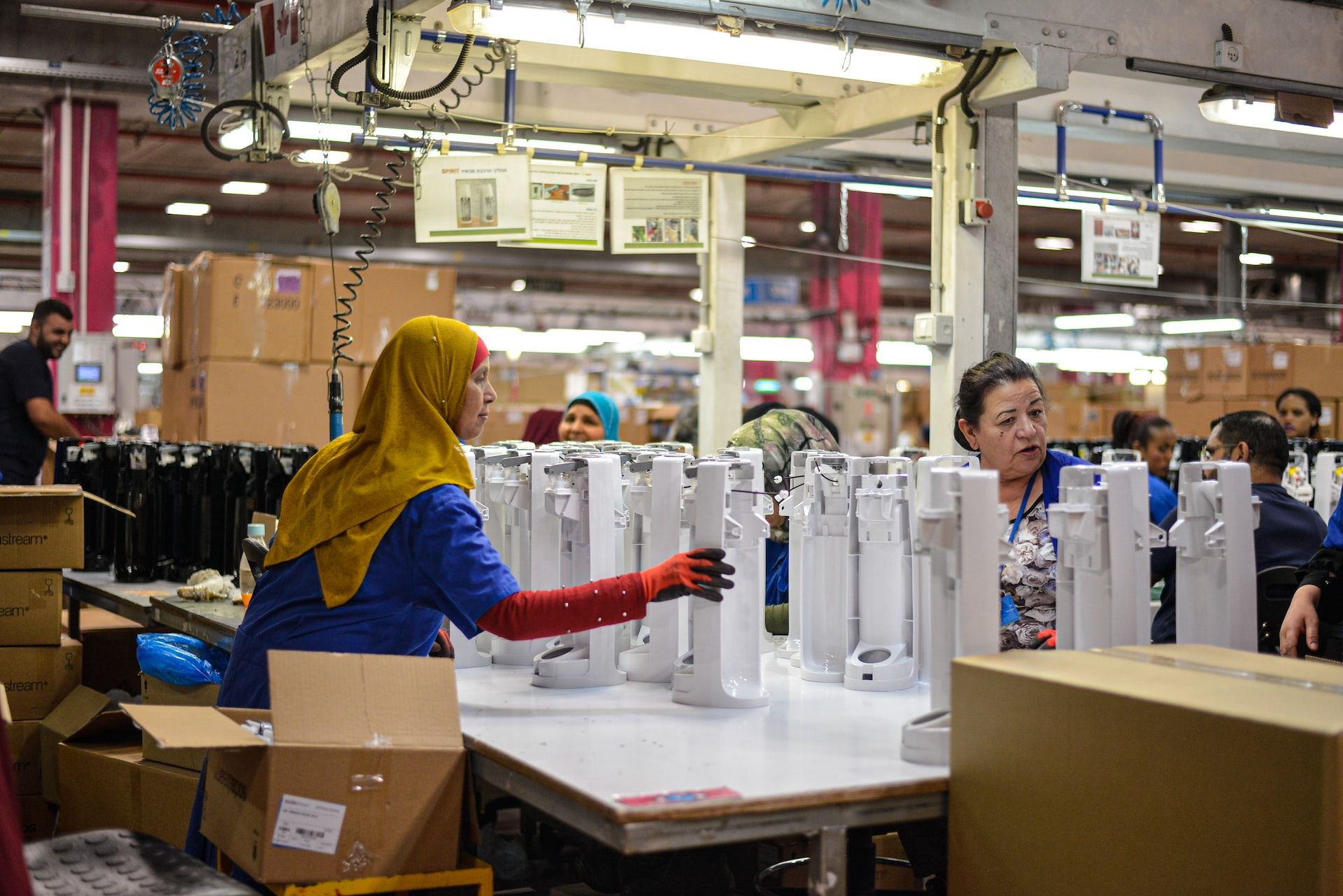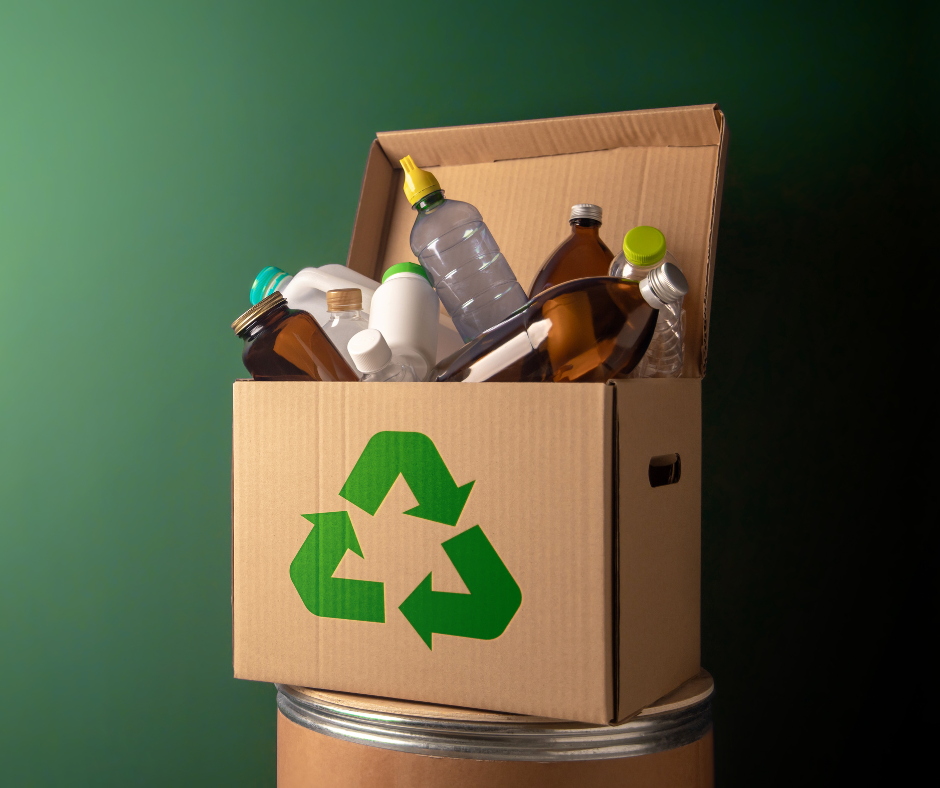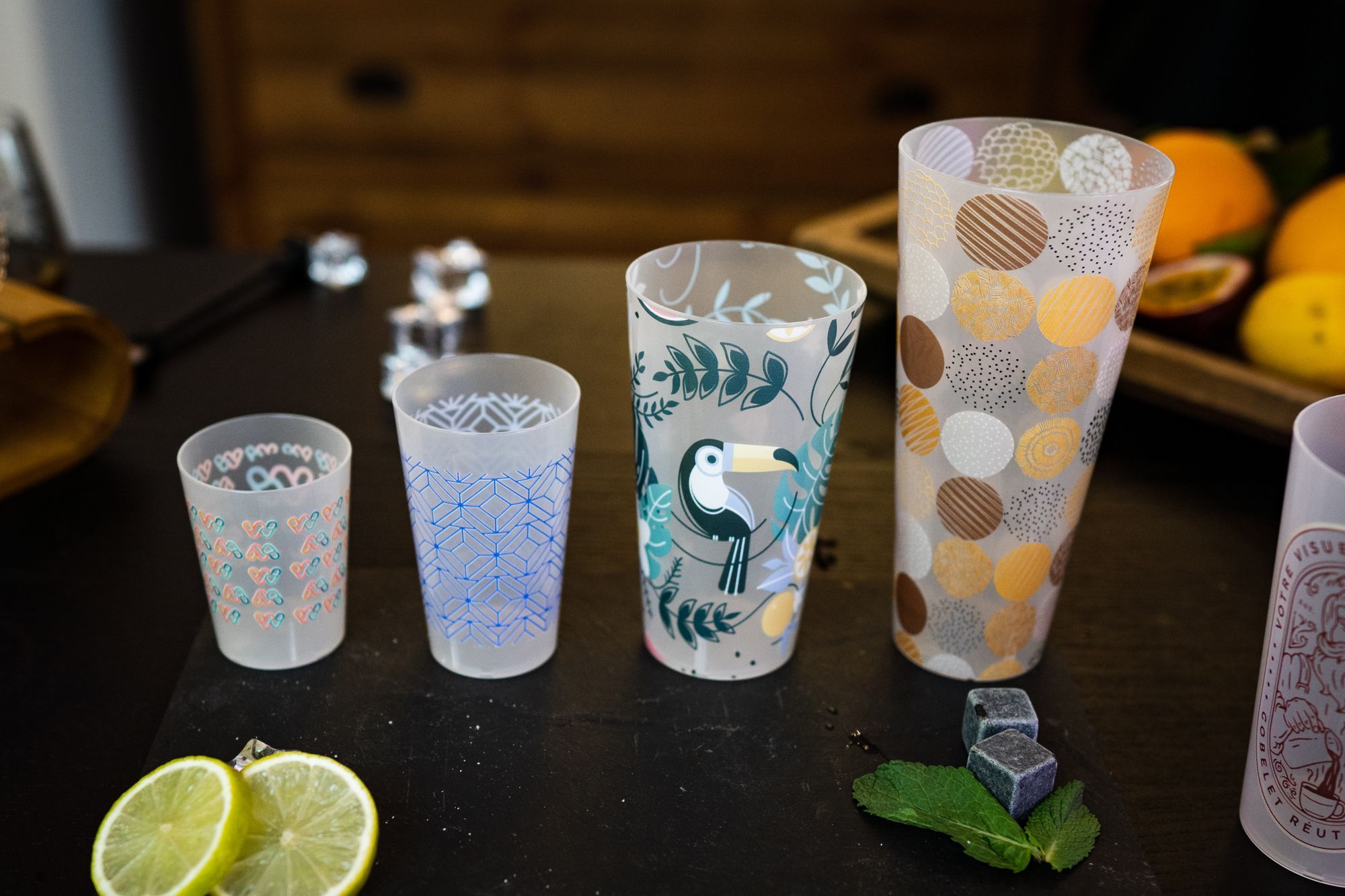Plastic manufacturing is a vital industry that plays a significant role in our modern world. With so many different types of plastics and production methods, it can be challenging to understand the best options for manufacturing specific products.
In addition to examining the manufacturing processes, we will also explore the benefits of plastic as a material, including its versatility, durability, and cost-effectiveness.
Plastic is used in a wide range of products, including packaging, electronics, and automotive parts, among many others. It is a lightweight material that is easy to transport and can be molded into virtually any shape or size, making it an attractive option for manufacturers and consumers alike.
However, with the widespread use of plastic comes environmental and social considerations. The impact of plastic waste on the environment is a growing concern, with millions of tons of plastic ending up in our oceans and landfills every year.
As such, we will also examine the steps that can be taken to minimize the negative impact of plastic production and waste, including recycling and sustainable manufacturing practices.
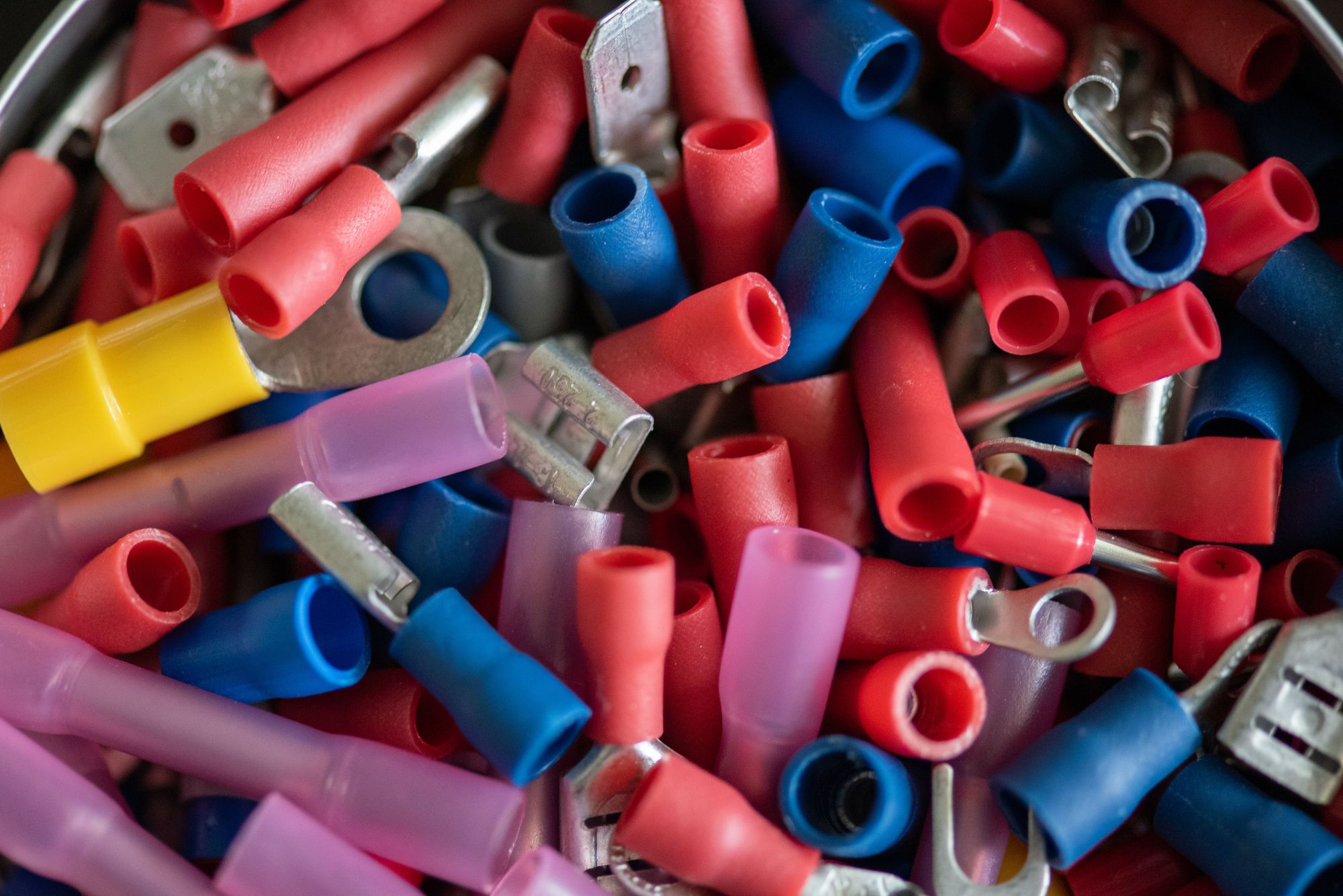
Whether you are a manufacturer looking to optimize your production processes or a consumer interested in learning more about the benefits and drawbacks of plastic, this article aims to provide valuable insights into the methods and benefits of plastic manufacturing.
Here's what we shall cover in this post:
- Injection Molding: The Popular Plastic Manufacturing Method
- Blow Molding: Ideal for Hollow Plastic Products
- Extrusion: An Economical Way to Produce Large Volumes of Plastic Products
- Rotational Molding: A Versatile Method for Creating Large Plastic Parts
- Thermoforming: A Cost-Effective Way to Produce Plastic Products in Small Quantities
- Compression Molding: Suitable for High-Volume Production of Large Plastic Parts
- Benefits of Plastic Manufacturing
- Plastic Recycling: A Sustainable Solution to Plastic Waste
- Innovations in Plastic Manufacturing: Advancements in Materials and Processes
- Conclusion
- Key Takeaways
Injection Molding: The Popular Plastic Manufacturing Method
Injection molding is a manufacturing process widely used for producing a variety of plastic parts and products. It is a popular method due to its efficiency, accuracy, and low cost per part. Here is an overview of injection molding as a plastic manufacturing method:
The Process
Injection molding involves the use of a mold, which is clamped together and then filled with molten plastic material. The plastic is then injected into the mold, which takes the shape of the desired product. The mold is then cooled, and the part is ejected.
Materials Used
Injection molding can use a wide range of materials, including thermoplastics, thermosets, and elastomers. These materials can be mixed with fillers, colors, or other additives to achieve desired properties.
Advantages
Injection molding has several benefits, including high production rates, consistent quality, and low labor costs. It also allows for complex shapes to be produced with precise tolerances.
Applications
Injection molding is used in a variety of industries, including automotive, aerospace, medical, and consumer goods. Common products produced through injection molding include bottle caps, electrical connectors, and toys.
Design Considerations
Designing for injection molding requires consideration of several factors, such as material selection, part geometry, and mold design. Designers must ensure that the part can be molded with minimal defects and that it can be ejected from the mold.
Equipment Needed
Injection molding equipment includes a machine, mold, and material handling equipment. The machine consists of an injection unit, which melts and injects the plastic, and a clamping unit, which holds the mold closed during injection and cooling.
Maintenance
Regular maintenance of injection molding equipment is essential for optimal performance and longevity. This includes cleaning and inspection of the machine, mold, and material handling equipment.
Environmental Impact
Injection molding can have a significant environmental impact due to the use of fossil-fuel-based plastics and the generation of waste. However, many manufacturers are adopting sustainable practices, such as using recycled materials and optimizing energy efficiency.
Future Trends
The injection molding industry is constantly evolving with materials, equipment, and technological advancements. Future trends include increased use of automation and robotics, the development of bio-based plastics, and the adoption of Industry 4.0 technologies for improved efficiency and sustainability.
Overall, injection molding is a versatile and efficient plastic manufacturing method with a wide range of applications. By understanding the process and its advantages and limitations, designers and manufacturers can create high-quality plastic products with minimal waste and environmental impact.
Blow Molding: Ideal for Hollow Plastic Products
Blow molding is a manufacturing process used to create hollow plastic parts. It is a popular method in the plastic manufacturing industry and is often used to produce bottles, containers, and other hollow products.
Here's an overview of blow molding and why it's an ideal method for creating hollow plastic products.
The process of blow molding:
Blow molding is a manufacturing process that involves melting plastic pellets and extruding them into a tube, known as a parison. The parison is then clamped into a mold and inflated with air until it takes the shape of the mold.
The plastic is cooled and hardened, and the mold is opened to release the finished product.
Types of blow molding:
There are three main types of blow molding: extrusion blow molding, injection blow molding, and stretch blow molding. Extrusion blow molding is the most common and is used to create simple, single-layer products such as bottles and containers.
Injection blow molding is used to create more complex products with intricate shapes and features. Stretch blow molding is used to create thin-walled products such as soda bottles.
Advantages of blow molding:
One of the most significant advantages of blow molding is that it is an efficient method for producing large quantities of hollow plastic products. It is also cost-effective compared to other manufacturing methods, such as injection molding.
Blow molding produces minimal waste, and the finished products are lightweight and durable. The method can be used with a wide range of plastics, including PET, HDPE, and PVC.
Applications of blow molding:
Blow molding is commonly used to produce bottles, containers, and other hollow plastic products. It is also used in the automotive and aerospace industries to create parts such as fuel tanks and ducts.
Blow molding can be used to produce products in a range of sizes, from small containers to large tanks and drums.
Challenges of blow molding:
One of the challenges of blow molding is that it is difficult to create products with thick walls or multiple layers. The method also requires precise control over temperature and pressure to ensure the final product meets the required specifications.
The molds used in blow molding can be expensive and may require frequent maintenance to ensure consistent quality.
Extrusion: An Economical Way to Produce Large Volumes of Plastic Products
Plastic extrusion is a manufacturing process used to create a variety of plastic products with a consistent cross-section, such as pipes, tubes, and sheets. The extrusion process is used for thermoplastic and thermosetting plastics and is economical to produce large volumes of plastic products.
Here are some key points to understand about the extrusion process:
- Extrusion is a continuous manufacturing process that involves melting plastic pellets and forcing the molten plastic through a die to create a product with a constant cross-section.
- The process starts with raw plastic material in the form of pellets fed into the extruder through a hopper.
- The extruder heats and melts the plastic pellets, then feeds the molten plastic through a die that shapes the plastic into the desired form.
- The extruded plastic is then cooled and solidified by water or air and cut to the desired length.
- The extrusion process can be modified to produce products with different properties, such as adding fillers to increase stiffness or using different dies to create products with different shapes or textures.
- Common extrusion applications include producing plastic pipes, tubes, sheets, and profiles, such as weatherstripping and door frames.
While extrusion is an efficient and cost-effective way to produce plastic products, there are some potential drawbacks to consider. For example:
- The initial setup and tooling costs for extrusion can be relatively high, especially for custom dies or specialized products.
- Extruded products may have limited design flexibility compared to other manufacturing methods, as they must have a consistent cross-section.
- The extrusion process can result in material waste, especially during setup and shutdown or when changing production runs.
- Extruded products may have limited physical properties, depending on the type of plastic used and the processing conditions.
Despite these limitations, extrusion remains a popular and effective manufacturing method for various plastic products. Manufacturers can produce high-quality, cost-effective plastic products using the extrusion process by carefully selecting the right materials, dies, and processing parameters.
Rotational Molding: A Versatile Method for Creating Large Plastic Parts
Rotational molding is a manufacturing process that is used to create large and complex plastic parts. The method involves the rotation of a hollow mold around two perpendicular axes while heating and cooling a plastic material.
This allows for the creation of hollow parts with consistent wall thickness, making it ideal for producing large products such as tanks, containers, and playground equipment.
Here are some key points to understand about the rotational molding process:
Process overview: Rotational molding involves using a hollow mold filled with powdered plastic material. The mold is then heated and rotated slowly around two perpendicular axes.
As the mold rotates, the plastic powder melts and adheres to the mold's interior surface, forming a solid, hollow part. Once the mold is fully cooled, the part is removed, and the excess plastic is trimmed.
Advantages: One of the key advantages of rotational molding is its ability to produce large and complex parts with consistent wall thickness, making it an ideal method for producing large tanks and containers.
Additionally, the process is relatively economical compared to other plastic manufacturing methods since it does not require a high level of tooling or complex assembly.
Material selection: A wide range of plastic materials can be used in rotational molding, including polyethylene, PVC, and nylon. The selected material will depend on the properties needed for the end product, such as chemical resistance or impact strength.
Design considerations: The rotational molding process allows for great design flexibility, but there are some limitations to consider. For example, the mold must be able to be opened and closed, which means that parts with complex shapes may require multiple mold sections.
Additionally, sharp corners or edges may be difficult to achieve due to the nature of the process.
Quality control: As with any manufacturing process, quality control is critical in rotational molding. Testing and inspection should be performed throughout the process to ensure that the parts meet the necessary specifications. Additionally, proper maintenance of the molds and equipment is essential to ensure consistency in production.
Thermoforming: A Cost-Effective Way to Produce Plastic Products in Small Quantities
Thermoforming is a popular plastic manufacturing process that is cost-effective and ideal for producing plastic products in small quantities. It involves heating a plastic sheet until it is pliable and then forming it into the desired shape using a mold or vacuum.
Here are some key points to understand about the thermoforming process:
- Material selection is crucial in thermoforming: The right choice of material is essential as it will affect the product's durability, appearance, and cost. Common thermoformable materials include polystyrene, polyethylene, and polypropylene, among others.
- Types of thermoforming: The two most common types of thermoforming are vacuum forming and pressure forming. Vacuum forming is best suited for simple shapes and lower volumes, while pressure forming is better for more complex shapes and higher volumes.
- The thermoforming process: The process begins with the heating of a plastic sheet until it becomes pliable. The sheet is then placed over a mold or vacuum and formed into the desired shape. The product is then cooled and trimmed.
- Advantages of thermoforming: Thermoforming is a cost-effective manufacturing process as it requires less tooling and machinery than other methods. It is also versatile and can produce a wide range of products in different shapes and sizes.
- Limitations of thermoforming: Thermoforming has limitations, such as the inability to produce products with thick walls and the risk of warping or distortion during the cooling process.
- Sustainability: Thermoforming is a relatively sustainable manufacturing process as it uses recycled plastic materials and produces less waste than other methods.
- Applications: Thermoforming is commonly used to produce a range of products, such as packaging materials, disposable cups and plates, automotive parts, and even aerospace components.
Compression Molding: Suitable for High-Volume Production of Large Plastic Parts
Compression molding is a plastic manufacturing technique that involves compressing a heated material into a specific shape or form using a mold. This method is ideal for producing high-strength plastic parts with complex geometries and is commonly used in the automotive and aerospace industries.
Here are some key considerations and advantages of using compression molding in plastic manufacturing:
- Material selection: Compression molding can be used with a variety of thermosetting materials, including epoxy, phenolic, and polyester resins. These materials are ideal for producing high-strength parts with excellent dimensional stability, heat resistance, and chemical resistance.
- High-volume production: Compression molding is suitable for producing large quantities of parts quickly and efficiently, making it ideal for high-volume production runs.
- Cost-effective: Compression molding is a cost-effective manufacturing process due to its high-volume production capabilities. It also requires less labor and has lower tooling costs compared to other molding methods.
- Customization: Compression molding allows for the production of complex parts with precise geometries, making it an ideal option for producing custom or unique parts.
- Environmental benefits: Compression molding is an environmentally friendly manufacturing process, producing less waste and scrap material. Additionally, many thermosetting materials used in compression molding can be recycled or reused.
Despite the advantages, there are also some drawbacks to compression molding:
- Limited material selection: Compression molding is limited to thermosetting materials, which have lower versatility compared to thermoplastics. Thermosetting materials cannot be re-melted or reshaped, limiting their use in certain applications.
- Longer lead times: The setup and curing process for compression molding can be time-consuming, resulting in longer lead times compared to other molding methods.
- Limited design options: Due to the nature of compression molding, there may be limitations to the design options available for certain parts or products.
Benefits of Plastic Manufacturing
Plastic manufacturing is the process of creating various plastic products from raw materials. The manufacturing of plastic products has become a vital industry worldwide because of its numerous benefits. Here are some of the advantages of plastic manufacturing:
Durability
One of the significant benefits of plastic products is their durability. Plastic products can last for a long time, and they do not wear out quickly. This makes plastic products ideal for industrial applications and long-lasting consumer products.
Lightweight
Plastic products are generally lightweight, making them easier to transport and handle. This quality also makes them suitable for use in applications where weight is an issue, such as in the aerospace and automotive industries.
Cost-effective
Plastic products are generally more cost-effective to manufacture than other materials such as metal or glass. This is because plastic is easier to mold and shape and requires less energy to produce, making it an ideal choice for mass production.
Versatility
Plastic can be molded into almost any shape or form, making it versatile for many applications. From automotive parts to toys, plastic products can be found in a wide variety of industries and settings.
Customization
Plastic products can be easily customized to meet specific requirements. The manufacturing process allows for the creation of products in different colors, shapes, sizes, and textures, making it easy to create products unique to a specific application.
Recyclable
Many plastic products can be recycled, reducing waste and environmental impact. Recycling plastic products can help conserve resources and reduce energy consumption in manufacturing.
Plastic Recycling: A Sustainable Solution to Plastic Waste
Plastic recycling is a process that involves collecting, sorting, cleaning, and transforming plastic waste into new products. As the world grapples with the plastic waste crisis, recycling has become an increasingly important solution to managing plastic waste sustainably.
Here are some key points to understand about plastic recycling and its benefits:
The plastic recycling process begins with the collection: Plastic waste can be collected through curbside recycling programs, drop-off centers, or commercial collection services. Once collected, the plastic waste is sorted according to its type and color, which is essential for ensuring the quality of the recycled product.
Sorting and cleaning the plastic waste is essential: Before the plastic waste can be transformed into new products, it must be sorted by type and cleaned to remove any contaminants. Sorting helps ensure that only the same types of plastic are combined, and cleaning helps remove any impurities that could impact the quality of the recycled plastic.
Plastic recycling conserves resources and reduces waste: By recycling plastic, the need for virgin plastic is reduced, which helps conserve natural resources. Additionally, recycling reduces the amount of plastic waste that ends up in landfills or the environment, where it can take hundreds of years to decompose and cause harm to wildlife.
Recycled plastic can be used to make a variety of products: Once the plastic waste has been processed, it can be transformed into a range of products, including plastic lumber, park benches, plastic bags, and even new plastic bottles.
Plastic recycling is a viable business opportunity: Plastic recycling can be a profitable business opportunity, as the demand for recycled plastic continues to grow. With the right technology and infrastructure, plastic recycling can be a valuable contribution to the circular economy.
Plastic recycling faces challenges: Despite its benefits, plastic recycling faces several challenges, such as contamination, lack of infrastructure, and the high cost of processing.
To overcome these challenges, educating consumers about proper recycling practices is essential, as investing in recycling infrastructure and encouraging manufacturers to design products with recycling in mind.
Governments and organizations are taking action to promote plastic recycling: Many governments and organizations around the world are taking action to encourage plastic recycling.
These efforts include implementing legislation and regulations to increase the use of recycled plastic, investing in recycling infrastructure, and partnering with businesses to promote sustainable practices.
Innovations in Plastic Manufacturing: Advancements in Materials and Processes
Plastic manufacturing has come a long way since its inception, and with the rise in demand for sustainable materials, the industry is constantly evolving to meet the changing needs of consumers.
Here are some of the latest innovations in plastic manufacturing:
- Bioplastics: These are made from renewable biomass sources, such as cornstarch, sugarcane, and potato starch. Bioplastics are becoming increasingly popular as they are biodegradable, compostable, and do not contribute to greenhouse gas emissions.
- Recyclable plastics: With an increased focus on sustainability, many manufacturers are now using materials that can be easily recycled. Some plastics can be recycled multiple times, which helps reduce waste and conserves resources.
- 3D Printing: Additive manufacturing or 3D printing has revolutionized the plastic manufacturing industry by enabling manufacturers to create complex geometries and unique designs that would have been impossible with traditional manufacturing methods.
- High-Performance Polymers: These are advanced materials that offer superior performance characteristics such as strength, durability, and resistance to heat, chemicals, and other environmental factors. Examples include polyimides, polyketones, and polyether ketones.
- Smart Plastics: These plastics have embedded sensors or other electronic components, allowing them to respond to their environment in real time. Smart plastics have a range of applications, including in the healthcare, automotive, and aerospace industries.
- Nanocomposites: These are plastics that are reinforced with nanomaterials, such as carbon nanotubes or graphene, to improve their strength, stiffness, and other properties. Nanocomposites have a wide range of applications, including in the construction, electronics, and biomedical industries.
- Lightweight Materials: With a growing emphasis on fuel efficiency and emissions reduction, lightweight materials such as carbon fiber-reinforced plastics and thermoplastics are becoming increasingly popular in the automotive and aerospace industries.
- Additive Manufacturing: Additive manufacturing allows for the creation of parts with a high level of complexity, often with fewer manufacturing steps than traditional methods. This technology can also reduce material waste and energy consumption.
How Deskera Can Assist You?
Deskera MRP allows you to closely monitor the manufacturing process. From the bill of materials to the production planning features, the solution helps you stay on top of your game and keep your company's competitive edge.

Deskera ERP and MRP system can help you:
- Manage production plans
- Maintain Bill of Materials
- Generate detailed reports
- Create a custom dashboard
Deskera ERP is a comprehensive system that allows you to maintain inventory, manage suppliers, and track supply chain activity in real-time, as well as streamline a variety of other corporate operations.
Deskera Books enables you to manage your accounts and finances more effectively. Maintain sound accounting practices by automating accounting operations such as billing, invoicing, and payment processing.
Deskera CRM is a strong solution that manages your sales and assists you in closing agreements quickly. It not only allows you to do critical duties such as lead generation via email, but it also provides you with a comprehensive view of your sales funnel.
Deskera People is a simple tool for taking control of your human resource management functions. The technology not only speeds up payroll processing but also allows you to manage all other activities such as overtime, benefits, bonuses, training programs, and much more. This is your chance to grow your business, increase earnings, and improve the efficiency of the entire production process.
Conclusion
Plastic manufacturing is integral to the economy and daily life, as plastic is used in a wide range of products and applications. There are several plastic manufacturing methods, including injection molding, extrusion, blow molding, and thermoforming, each with its own advantages and limitations.
The selection of the manufacturing method depends on various factors such as the complexity of the product, cost, and quality requirements. The benefits of plastic manufacturing include its versatility, durability, lightweight, and cost-effectiveness. It also has a lower carbon footprint compared to other materials such as metal and glass.
However, plastic manufacturing also poses environmental challenges, such as the disposal of plastic waste and the use of fossil fuels in the manufacturing process. Thus, there is a need for sustainable practices in plastic manufacturing to minimize environmental impact.
Adopting recycling, bioplastics, and circular economy principles can help reduce plastic waste and promote a more sustainable plastic manufacturing industry.
Overall, plastic manufacturing remains a vital industry with various methods and benefits. There is a need for continuous improvement and sustainable practices to meet the growing demand for plastic products while minimizing its environmental impact.
Key Takeaways
- Plastic manufacturing involves various methods, including injection molding, extrusion, blow molding, and thermoforming.
- Injection molding is one of the most commonly used methods for producing high-volume plastic products with consistent quality.
- Extrusion is used for producing plastic tubing, sheets, and films and is suitable for high-volume and low-volume production.
- Blow molding is a method used for producing hollow plastic products such as bottles, containers, and drums.
- Thermoforming is a process for producing plastic products with various shapes and sizes, such as packaging trays and lids.
- The benefits of plastic manufacturing include cost-effectiveness, versatility, durability, and recyclability.
- Plastic products are lightweight and require less energy to transport than other materials such as metal or glass.
- Plastic is a versatile material that can be molded into almost any shape and can be colored, textured, or finished in various ways.
- Plastic products are durable and resistant to impact, chemicals, and weather damage.
- Recycling plastic reduces the amount of waste that goes to landfills and conserves natural resources.
Related Articles
